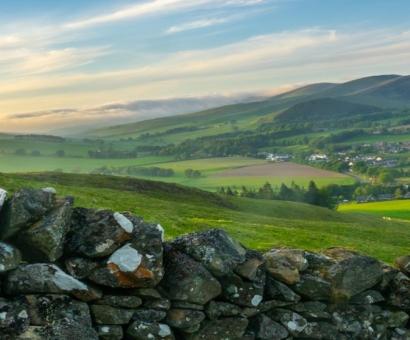Mapping Scottish Landownership
This research is part of a wider project "Impacts of land-based financial support mechanisms on land values, land ownership diversification and land use outcomes" (SRUC-E3/C3-1). This report demonstrates our work to date on mapping the ownership, sales, land use (change) and monetary flows of Scottish land over time. It provides a working methodology, applied to a small case study area. In future years this method will be used to map multiple larger case studies across Scotland and explore flows of public money and land use change.
What were we trying to find out?
We developed a methodology to determine if there is a relationship between land ownership and, firstly, land use decisions (a land use change, continuation on the same path, diversification, etc.), and secondly, monetary flows into land, and whether either of these are affected by a recent sale (i.e. a sale triggers a change of land use or a change of monetary flows). This is a multi-year process which is ongoing. In this research briefing we present our work to date, which includes a working example of an area of the Spey Catchment.
What did we do?
We utilised multiple data sources to compile a map representing land ownership, recent sales, monetary flows and land use/ land cover. This was a complicated task, with a new method created to aid and partly automate the process. The main data set utilised to map land transactions was purchased from the Registers of Scotland (RoS) which proved very hard to work with due to multiple inconsistencies at the data entry stage. Land ownership was mapped primarily with purchased Who Owns Scotland data. Land use/ land cover was mapped using a suite of different data sources. When the process was refined, it was applied to a small case study.
Parallel to the mapping work, a land ownership typology was created. This is a seven-fold typology that categorises individual parcels of land according to size, ownership, land use, type (farm/ forest/ estate), size descriptor and any defining characteristics. The ownership typology was then applied to the case study area. Multiple data sources were used to map monetary flows.
What did we learn?
Spatially mapping land ownership and recent sale transactions of land is complex and arduous. Despite these issues, we still managed to create a working methodology for mapping land ownership using Registers of Scotland data, and successfully integrated this with multiple other data sources. Through this process we have developed a tool that is (once the land ownership level is complete) fully automated and can produce useful maps and descriptors of any piece of land in Scotland, so long as ownership is known.
What do we recommend and what happens next?
In the coming years of the project this mapping exercise will be applied to four case study areas across Scotland (Tweed Catchment, Spey Catchment, Shetland Islands and Galloway and South Ayrshire Biosphere Reserve). The case study presented in this report is static in time, but we also intend to map these areas over multiple historic years to track patterns in land ownership, land use change and monetary flows into land.
We have also co-written a Policy Note in conjunction with the James Hutton Institute. It provides recommendations to improve the integration of data and transparency to aid the process of mapping Scottish land ownership to inform policy-making.
You can read the full report and policy note below.










